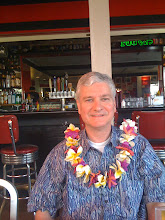Pictures Enlarge if you click on them.
Exterior of Les Invalides
In 1670, Louis XIV - the Sun King - founded Les Invalides (the name is a shortened form of hopital des invalides, the hospital for invalids) near what was then called the Grenelle Plain. An old soldiers home, it was funded by a five year levy on the salaries of soldiers currently serving in the army at that time. The first stones were laid in 1671, for what was to become a complex providing quarters for 4,000. Construction followed plans drawn up by Libéral Bruant, and was completed in 1676. The Esplandade was laid out by Robert de Cotte.
The buildings still comprise the Institution Nationale des Invalides , a national institution for disabled war veterans. The institution comprises a retirement home, a medical and surgical center, and a center for external medical consultations.
I took this photo of Les Invalides from the top of the Eiffel Tower.
Catherine in front of Les Invalides
Court of Honor (Cour d'Honneur) of the Museum of the Army
The Cour d'Honneur is used as a setting for military parades as well as ceremonies for awards and decorations and for concerts.
Catherine in front of the altar of Louis XIV royal chapel of Les Invalides designed by Jules Hardouin-Mansart
Charles de La Fosse's allegories under the dome over the tomb of Napoleon
It was felt that the veterans required a chapel. Jules Hardouin Mansart assisted the aged Bruant, and the chapel was finished in 1679 to Bruant's designs after the elder architect's death. The chapel is known as Eglise Saint-Louis des Invalides. Shortly after the veterans' chapel was completed, Louis XIV had Mansart construct a separate private royal chapel, often referred to as the Église du Dôme from its most striking feature. The dome was inspired by St. Peter's Basilica in Rome. The interior of the dome was painted by Le Brun's disciple Charles de La Fosse (1636 - 1716).
Tomb of Napoleon Bonaparte (1769-1821)
The most significant event in the history of Les Invalides is the return of the body of Napoleon Bonaparte in 1840. After seven years of negotiation with the British government, Louis-Philippe, King of France, obtained permission to repatriate the Emperor's remains from St. Helena. On 8 October 1840 - 19 years after the death of the Emperor - the coffin was exhumed and opened for two minutes before transport to France aboard the frigate La Belle Poule. Those present claim that the body remained in a state of perfect preservation.
After arriving at Le Havre, it was brought up the Seine and landed at Paris at Courbevoie. On 15 December 1840 a state funeral was held, and despite a winter snowstorm, the hearse proceeded from the Arc de Triomphe down the Champs-Elysées, across the Place de la Concorde to the Esplanade and finally to the cupola in St Jerome's Chapel until the tomb - designed by Visconti - was completed. On 3 April 1861 Napoléon I came to his final rest in the crypt under de dome.
Les Invalides is also the burial site for some of Napoleon's family, for several military officers who served under him, and other French military heroes such as:
•Joseph BonaparteJoseph Bonaparte ( January 7, 1768— July 28, 1844) was the eldest brother of the French Emperor Napoleon I, who made him King of Naples ( 1806 1808) and Spain ( 1808 1813). Bonaparte was born Giuseppe Bonaparte at Corte in Corsica.
•Jerome Bonaparte (1785 - 1851) -- Napoleon's youngest brother
•Napoleon II of France (1812 - 1833) -- son of Napoleon
•Claude Joseph Rouget de Lisle (1760 - 1836) Army captain, he is the author of France's national anthem, La Marseillaise
•Ferdinand Foch (1851 - 1929) - French Marshall during the First World War
•Antoine Marie-Roger de Saint-Exupery (1900 - 1944) - author of The Little Prince
•Henri de la Tour d'Auvergne (1611- 1675), better known as the Viscount de Turenne, he was Marshal of France under King Louis XIV and is one of France's greatest military leaders
•The heart of Sébastien Le Prestre de Vauban - the designer of Louis XIV's military fortifications
Labels: France, Hospital, Invalides, Napoleon, Napoleon Bonaparte, Paris, Photos, Travel























































